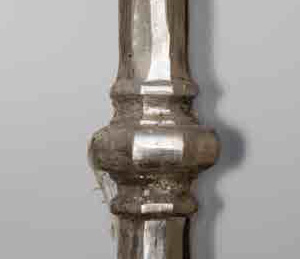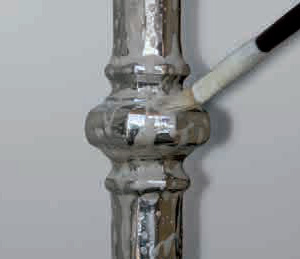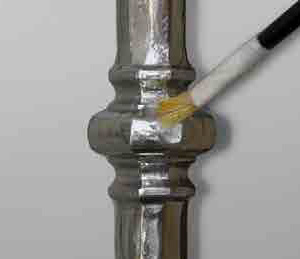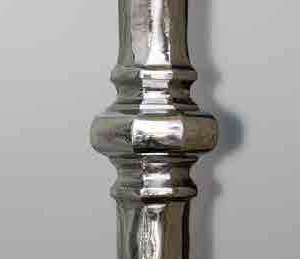HOW TO TREAT STEEL
Cleaning and maintenance
Stainless steel is an iron and carbon alloy that is particularly corrosion resistant; the main reason is chrome, presence, which can oxidize and create a slim film able to resist external chemical agents. To keep unchanged its features, it is necessary to avoid the following actions::
- Storage near iron elements
- Use of same tools both for iron and stainless steel items
- Inadequate treatment during the assembly
- Urban and fine dust pollution
IAM Design has developed a specific stainless steel cleaning line, which is able to emove polluting elements, and able to recreate the original film protection. Combination of these products can succeed in fixing a damaged surface.
For ordinary cleaning, you can use a humid soft rag with no solvent or abrasive material and carefully dry to avoid limestone stains. Cleaning with IAM Design products at least once a year is highly recommended. In case of installation in highly polluted locations, such as cities or seaside resorts, it is necessary to do an accurate cleaning with IAM Design specific products every 1-2 months, or as soon as there are stains on the surface.
How to tread oxidized stainless steel
Stainless steel is a lasting and reliable material. Nevertheless, it is necessary to treat it correctly in order to avoid its oxidization under specific circumstances. As a matter
of fact, stainless steel can oxidize in case of: storage near Iron elements, inadequate treatments during the assembling phase, use of the same tools used to work Iron elements,
urban pollution and dust, proximity of companies working in the metallurgic field. In order to meet the needs of its customers, Ind.i.a. spa created a line of specific items: the De-rusting (item E4051/D) and the Passivating (item E4051/P) products.
Such line includes some de-rusting items aimed at cleaning "polluted" stainless steel components as well as some passivating products in order to restore their protective film. The combined use of such products allows the “renovation” even of surfaces that apparently seem compromised.

Example of a stainless steel picket polluted by external agents like dust and smog

Application of the de-rusting product E4051/D: all polluted parts must be covered.

Application of the passivating product E4051/P: the polluted component must entirely be covered

Result of the application of Ind.i.a. spa’s de-rusting and passivating products

 Italiano
Italiano
